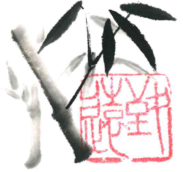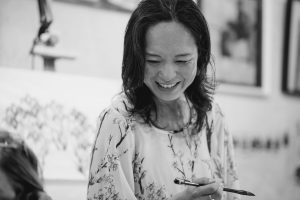Asian art encompasses a variety of painting techniques that have evolved over the centuries, each with its own distinctive philosophy and style. Among these, Sumi-e stands out for its simplicity and spiritual expression, but how does it compare with other Asian painting techniques? In this article we explore its differences and similarities with Chinese guohua, Japanese nihonga and Tibetan Thangka painting.
What is Sumi-e?
Sumi-e is a traditional Japanese painting technique derived from Chinese shui-mo hua. It is characterised by the use of black ink on paper or silk, applying precise brushstrokes that reflect the essence of the objects depicted. More than a simple painting technique, Sumi-e seeks to capture the harmony between nature and the artist’s mind, following the principles of Zen Buddhism.
The essential elements of Sumi-e include:
- Exclusive use of black ink (although some artists incorporate touches of colour).
- Minimalist composition with significant empty spaces.
- Fluid, controlled brushstrokes that convey movement and emotion.
- Symbolic representation of nature, such as bamboo, mountains and birds.
If you are interested in learning this technique, we offer online Sumi-e courses in different cities, including Barcelona, Madrid, Seville, Valencia and Bilbao, allowing you to practice from anywhere.
Differences between Sumi-e and other Asian painting techniques
1. Guohua: Traditional Chinese painting
Guohua is the Chinese equivalent of Sumi-e, but has key differences:
- It is practised with ink and watercolours on silk or rice paper.
- It uses a wider range of colours compared to the monochrome of Sumi-e.
- It is divided into two main styles: gongbi (meticulous detail and bright colours) and xieyi (expressive and free, similar to Sumi-e).
- It emphasises calligraphy and the integration of poetic texts into the painting.
If you are looking to learn more about Sumi-e and oriental techniques, you can access our courses in Malaga, Murcia, Zaragoza, Reus and Las Palmas.
2. Nihonga: Traditional Japanese painting
Unlike Sumi-e, nihonga is a Japanese technique that uses mineral pigments and gold leaf on paper or silk. Some notable differences include:
- Use of vibrant colours rather than the monochrome of Sumi-e.
- Greater emphasis on texture and depth.
- Laborious technique with multiple layers of natural pigments.
Both Nihonga and Sumi-e seek to reflect the beauty of nature, albeit with different methods. To find out more about Sumi-e, we offer training in cities such as Paris, Amsterdam, Berlin, Milan and London.
3. Thangka: Tibetan Sacred Painting
Tibetan Thangka is a form of Buddhist art that focuses on religious depictions in precise detail. It differs from Sumi-e in:
- Use of vibrant and detailed colours.
- Depiction of deities, mandalas and spiritual figures.
- Requires ritual preparation prior to creation.
While Sumi-e emphasises simplicity and spontaneity, Thangka is meticulous and full of religious symbolism. If you are interested in learning Sumi-e, our classes are available in Girona, Sant Cugat del Vallès, Rubí and Palma.
How to choose the right technique for you
If you are interested in Asian painting but don’t know where to start, here are some tips:
- If you are looking for expressiveness and minimalism, Sumi-e is ideal.
- If you prefer meticulous details and vivid colours, Guohua can be an excellent choice.
- If you are interested in Japanese tradition with a contemporary twist, Nihonga offers a variety of styles.
- If you are drawn to religious and symbolic art, Tibetan Thangka is a profound and spiritual technique.
Our online courses are designed to give you practical training, no matter where you are in the world.
In conclusion, each Asian painting technique reflects the culture and philosophy of its country of origin. While Sumi-e focuses on minimalist and spiritual expression, Chinese Guohua, Japanese Nihonga and Tibetan Thangka present more detailed and colourful approaches.
If you wish to learn Sumi-e and perfect your technique from home, we invite you to explore our online courses available in cities such as Madrid, Barcelona, Valencia, Seville and Zaragoza, where you can practice with expert guidance and immerse yourself in this ancient art.



